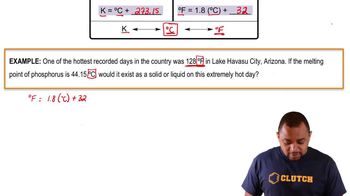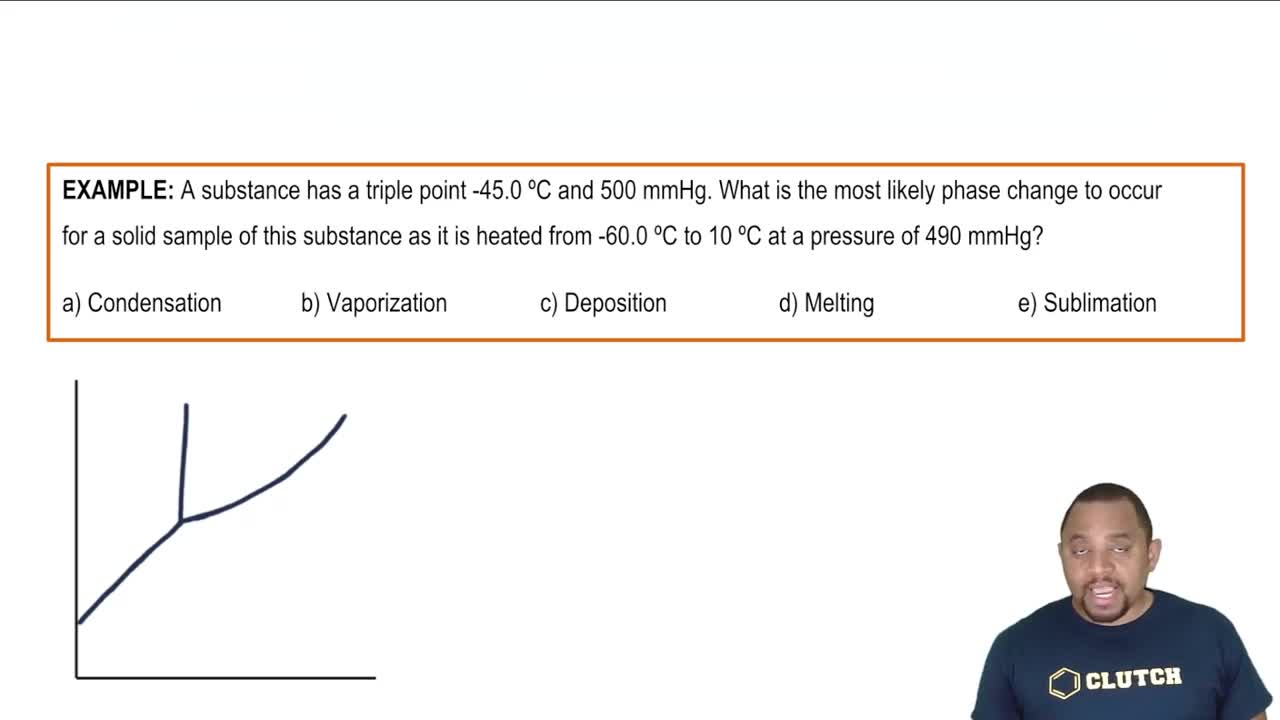Make the following conversions: (f) 35 °F to K.
(c) During winter, the temperature of the Arctic region can drop below -50 °C, what is the temperature in degree Fahrenheit and in Kelvin? (d) The sublimation temperature of dry ice is -78.5 °C. Convert this temperature to degree Fahrenheit and Kelvin. (e) Ethanol boils at 351 K. Convert this temperature to degree Fahrenheit and degree Celsius.
 Verified step by step guidance
Verified step by step guidance
Verified video answer for a similar problem:
Key Concepts
Temperature Conversion

Sublimation

Boiling Point

(a) A child has a fever of 101 °F. What is the temperature in °C?
(b) In a desert, the temperature can be as high as 45 °C, what is the temperature in °F?
(a) A sample of tetrachloroethylene, a liquid used in dry cleaning that is being phased out because of its potential to cause cancer, has a mass of 40.55 g and a volume of 25.0 mL at 25 °C. What is its density at this temperature? Will tetrachloroethylene float on water? (Materials that are less dense than water will float.)
(b) Carbon dioxide (CO2) is a gas at room temperature and pressure. However, carbon dioxide can be put under pressure to become a 'supercritical fluid' that is a much safer dry-cleaning agent than tetrachloroethylene. At a certain pressure, the density of supercritical CO2 is 0.469 g/cm3. What is the mass of a 25.0-mL sample of supercritical CO2 at this pressure?
